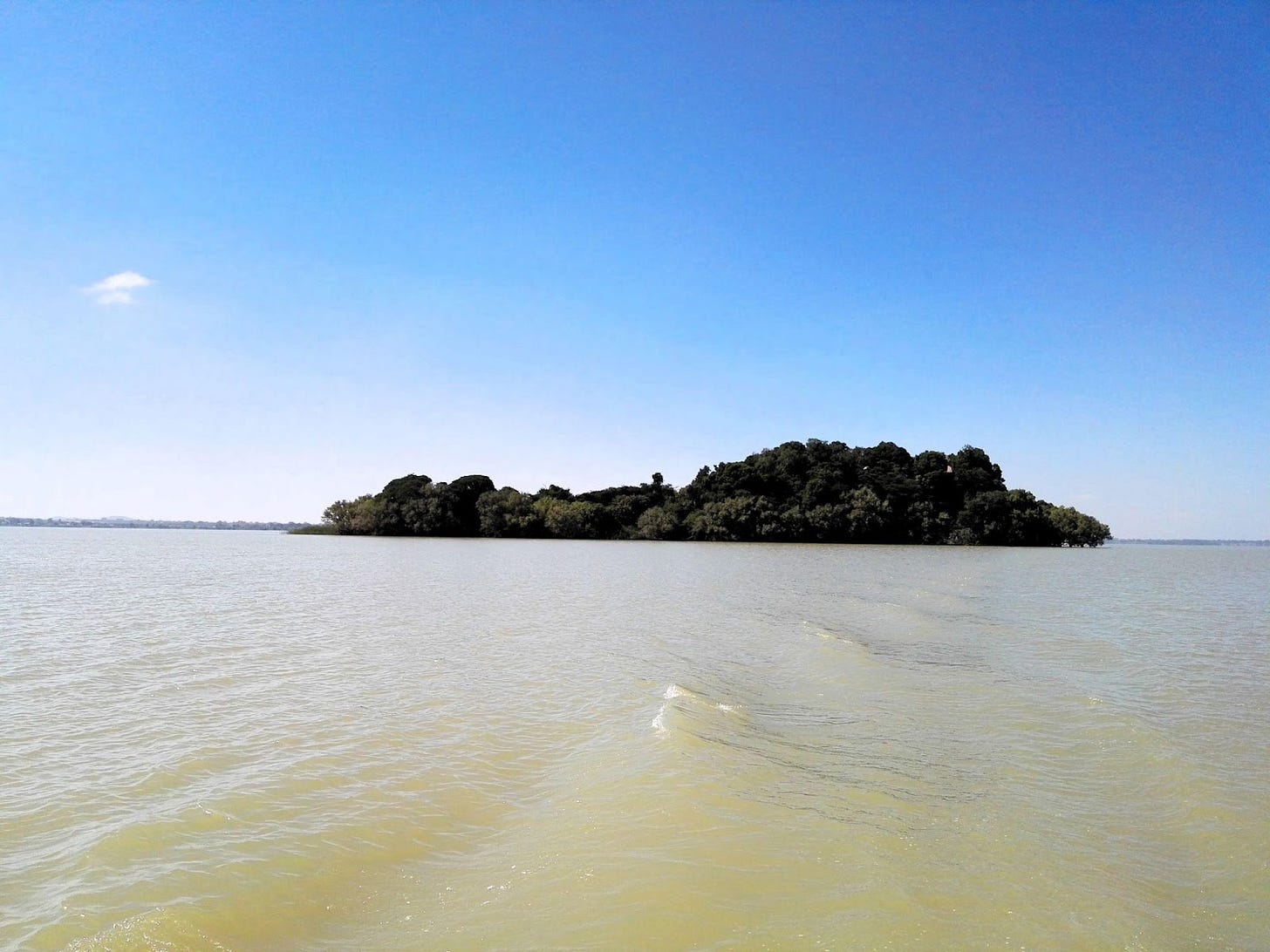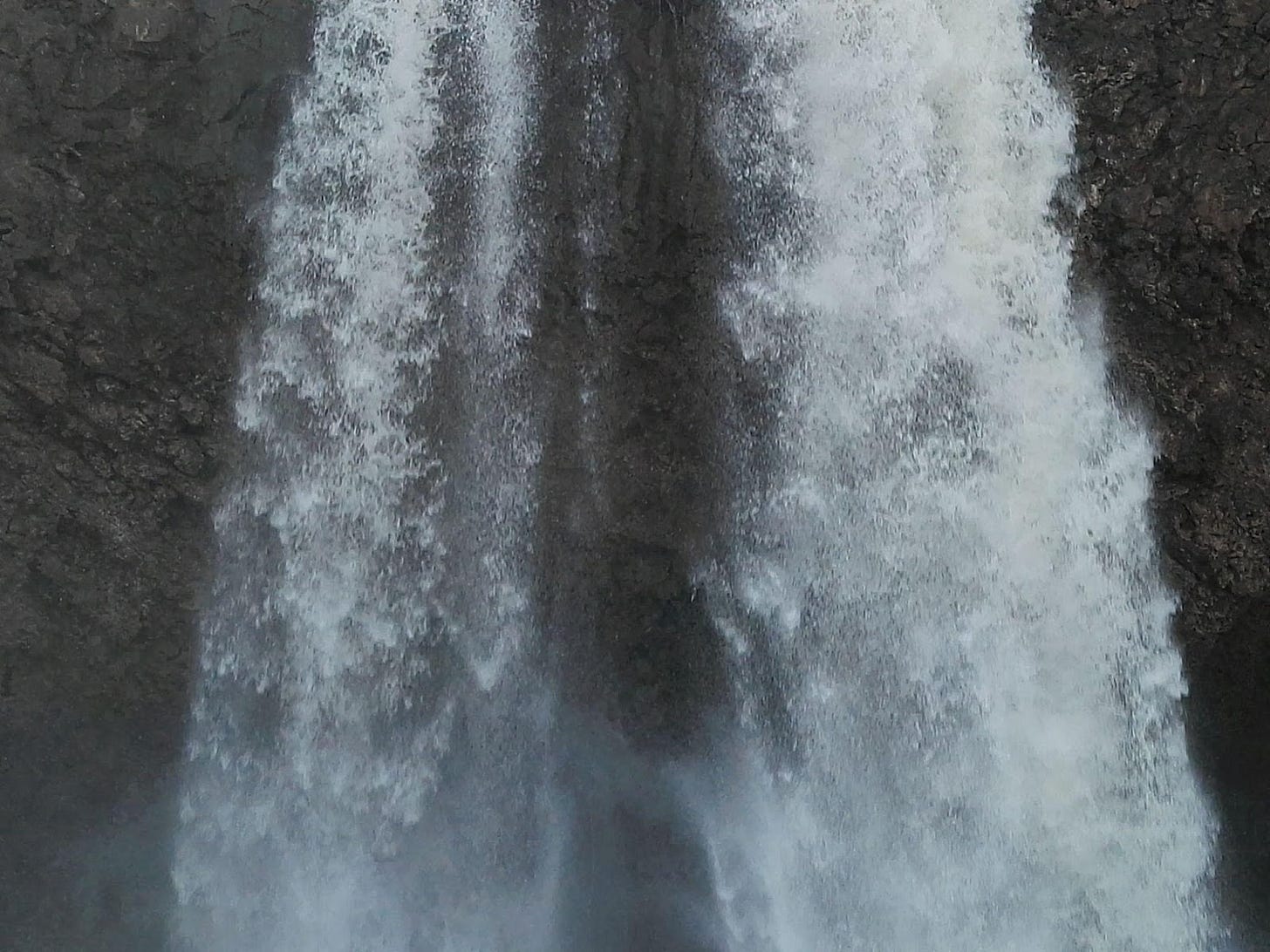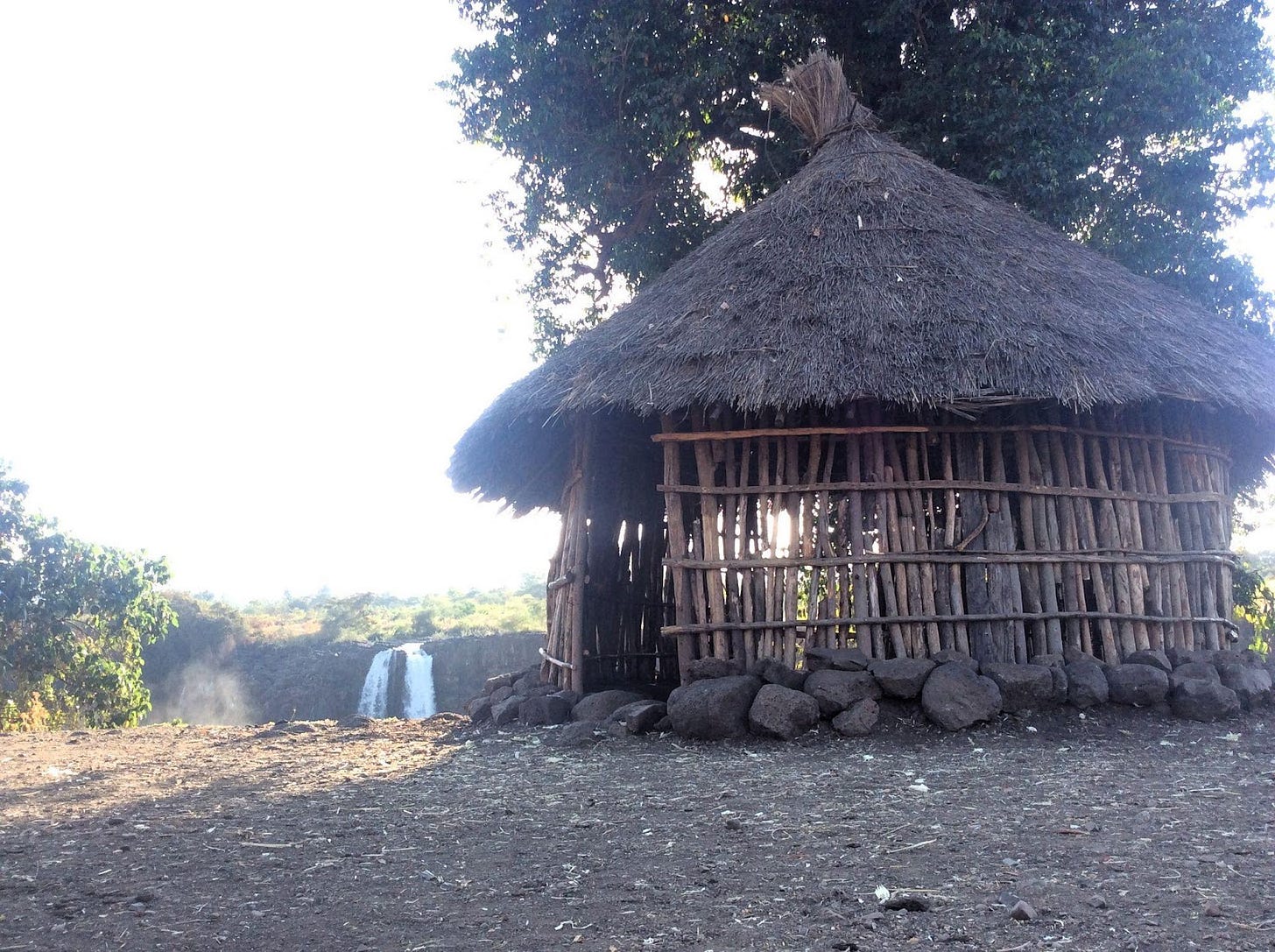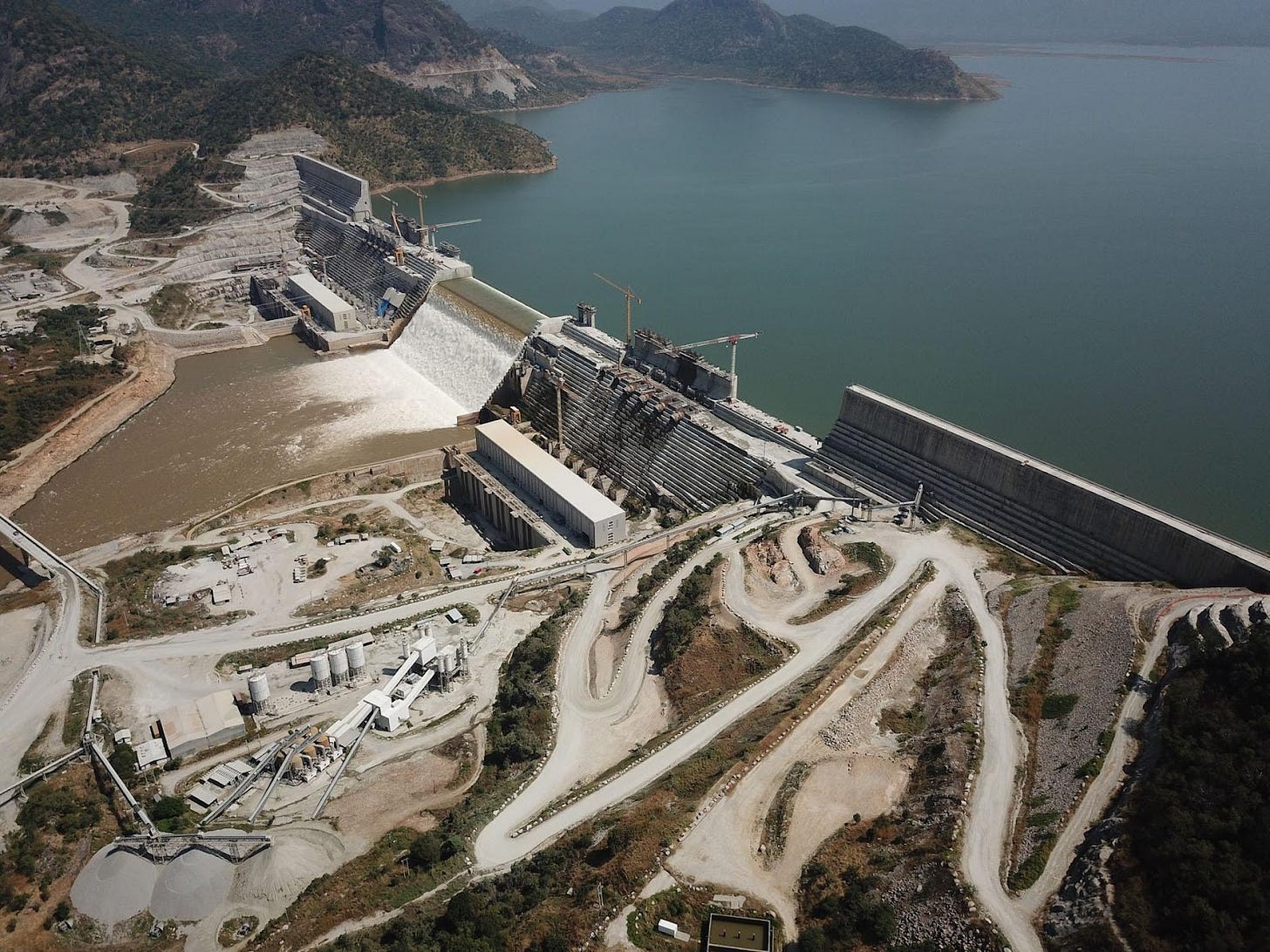The Blue Nile, known as Abbay in Amharic, holds a special place in the hearts and minds of Ethiopians. Over the centuries, songs, poems, stories, and religious practices have sung praises of this river as the source of shared pride and identity. There are numerous oral traditions that reflect the hope the river represents by expressing how its untapped potential for the nation's growth and prosperity remains untapped for present use.
The river spans 1,450 kilometers, originating from Lake Tana, an 84-kilometer-long and 66-kilometer-wide lake that, incredibly, accounts for half of the groundwater water in Ethiopia. Lake Tana is famous for its islands that host sacred and celebrated sites steeped in local mythology and churches which hold ancient religious manuscripts and ecclesiastical art. The lake joins the White Nile and the Atbara River to form the Nile River–the longest river in the world.
Ethiopia’s art and culture share a symbiotic relationship with the river. People have relied on the Blue Nile as a source of inspiration for literature, music, poetry, and art that has endured generations. It is not far-fetched to say that the river is a beacon of hope, a repository of memories, and a lifeline for the millions who dwell along its banks.
The Falls
The Roar of Misty Waters
The Blue Nile makes dramatic twists and turns as it flows along its course: one of them is the Blue Nile Falls or the Tis Abbay in Amharic which translates to “smoking water.” The Falls nosedive about 45 meters down, bestowing a surreal mist that shrouds its surroundings in an ethereal veil. The sound of the falls creates a distinct roar across the plains, leaving a lasting impression of beauty and wonder.
The Gorges
Channels of Beauty
Across its 1,450-kilometer journey, the river carves out incredible yet treacherous gorges that are rendered with steep cliffs and turbulent rapids forming impressive ends. Notable explorers such as Sir Richard Burton and John Hanning Speke set off on an adventurous, near death expedition through the gorges in the 19th century which resulted in jaw dropping stories on the raging waters and the hostile terrain making the legacy of the river all the more mystifying.
The GERD
Towards the Nation’s Energy Production, Hope, and Shared Prosperity.
The Grand Ethiopian Renaissance Dam or G.E.R.D is a staggering infrastructure project currently underway which is set to become one of the largest hydro-power dams in Africa. The project sits about 40 kilometers downstream of the Beles River confluence at a narrow point and 15 kilometers north of the Ethiopia-Sudan border. The considerably large budget created through a national crowdfunded program saw no foreign aid or investment; it aims for a self-reliant investment in Ethiopia’s wider electrification project. The dam is a complex engineering marvel with far-reaching impacts that include an increase in Ethiopia’s hydropower generation capacity to 5150 megawatts with an average generation of 15,760 GWh per year. Far greater than it is currently. The project is expected to be a source of both national and regional cooperation that can foster collective growth and sustainable development with neighboring countries.
The Holy Water
Water from the Heavens.
The Blue Nile River originates from the Gish Abbay Spring, located in the foothills of Mount Gish in the Sekela district of Western Gojjam, in the Amhara region. According to tradition, the spring is believed to have a divine source, often referred to as being from paradise, and is mentioned in both the Old and New Testaments of the Bible.
“A river watering the garden flowed from Eden; from there, it was separated into four headwaters. The name of the first is the Pishon; it winds through the entire land of Havilah, where there is gold. The name of the second river is the Gihon; it winds through the entire land of Cush. The name of the third river is the Tigris; it runs along the east side of Asshur. And the fourth river is the Euphrates.”- Genesis 2:11–14
This important identity of the river as holy water from heaven strengthens its presence in Christian traditions.
Written by Simele Nigussie.
Edited by Nahom Teklu.






